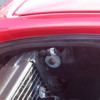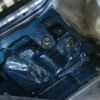I have changed almost every component in my cooling system over the last year and the car is running hotter than ever. I need help figuring out why because I think I've done all the obvious things and none seem to be working.
Some background facts:
• My car is a 1971 with the 10.5:1 engine. I run a Holly 650 and use 94 octane fuel (usually with a Race formula octane boost). The car currently has about 18,000 miles on it. Timing is set to 6° BTDC as per specs. I use a Duraspark II ignition system. Overall the engine runs great and even gets 20 MPG on the highway.

• When I got my car it didn't run exceptionally hot except (typically the Gauge indicated 185°) the very odd time when I got stuck in summer rush-hour for almost an hour (Gauge indicated 230°)
• I accept that the gauges don't indicate accurate temps, but I make the assumption (yeah, I know) that it is functioning consistently and the numbers, while wrong, are relatively correct — at least as far as relative temperature changes goes.
• After a couple of years of driving, the car gradually indicated it was running hotter and when doing so, I noticed an increasing in pinging.
• I replaced the water pump with the recommended Edelbrock unit. No change in running temps was experienced afterwards, and I am convinced my original pump was functioning perfectly.
• After another year I noticed some mild weeping of coolant at the rear of the head gaskets (usually after the car sat for a month of storage) and so I decided to replace the head gaskets. I used high-quality FelPro blue gaskets and believe they were installed correctly. The heads had a cleaning pass done on them to ensure they were flat and I was told it was a very minimal shave that shouldn't increase compression any significant amount. After all was completed, still the car ran hot.
• A month ago I decided enough was enough and I changed the rad to a new Fluidyne unit (with new senders) and installed new Flex-a-lite dual sucker fans, new stainless cooling pipes and new hoses. The morning after I completed the install, I headed off to Montreal. I drove well above the posted limit (maybe) and the car ran an indicated 165° all the way there. I was ecstatic. UNTIL we hit downtown traffic and the car started to heat up. With both fans on the temp stayed between 200 and 220 (between the tick in the middle of 160 and 230 on the gauge). The fans definitely move a LOT more air and the air coming through the rad is definitely hot (when the gauge shows hot). One fan is on the low-temp rad sensor and the other is switched at the dash (typical for '71 cars).

• A couple of hoses had loosened up overnight while in Montreal and so a cup or so of coolant leaked out from the bottom tubes. I just topped up the pressure tank with coolant and headed home. It was a warmer day but the car did run a lot hotter - indicated about 200° compared to the previous day's 165°.
• Upon returning, I decided the only thing left to change was the thermostat. I had ordered a couple Robert Shaw units and they didn't arrive in time. With the new 333-180 stat, I again drained buckets of coolant, removed the old stat (a 160° unit of unknown origin) and installed the RS unit. I again bled the system but for some reason wasn't able to put back as much as I had drained out (at least I think that was the case unless I mixed up my jugs of coolant). I has a cup or two coolant left over.

• my normal process for bleeding the system is: start with cold car, back end raised about a foot, inside heater lever to hot, bleed screw on rad open and fill coolant through the pressure tank until it comes out the rad while running the engine. Run the engine until coolant in the pressure tank starts to bubble, cap the tank and shut off the engine. BUT, when I did this I forgot to add coolant to about half-way on the overflow tank the first time, so I'm sure it sucked air into the system.
• I have also seen coolant leaking out from the pressure cap so I decided to replace it. I'm pretty sure my tanks have been modified because they have the nice billet caps with the pressure cap bonded it. When I removed it, the number on it is RC82 which is a GM rad cap part number. I bought a new Prestone branded cap (see cap on right)

The original cap on my tanks:

• I have tried burping the system and raised the front of the car to see if I can get any more air out of the rad (not a bubble).
I have tried not to leave out any details and I really appreciate any suggestions as to what is going wrong here. I THINK it's air trapped, but I have never had this much trouble getting air out before, so I'm not sure. This was the longest time the car sat (over a month) with no coolant in it while I replaced everything (I re-carpeted front trunk, repainted front rad area etc.) but even so, this is stumping me.
Thanks for any ideas.
Mark





